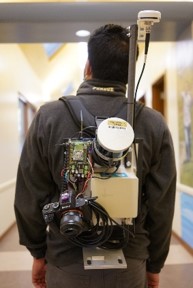Terrestrial Mobile Lidar for High Resolution Forest Inventory

TERRESTRIAL MOBILE LIDAR FOR HIGH RESOLUTION FOREST INVENTORY

Imagine using a handheld/backpack system or your smartphone to scan a forest plot and derive a complete inventory of every individual tree by species, volume, grade, and economic value. As digital technologies are advancing quickly allowing autonomous cars and trucks to move on our highways, the dream to use these digital technologies for automated forest inventory is very close to becoming a reality.
Both hardware (e.g., LiDAR and digital cameras) and software (e.g., AI) are advancing quickly and becoming economically affordable. This can allow advanced computing (e.g., AI) and multi-dimensional data from various sources to be used in forest systems to improve information gathering and decision-making.
Improvements in digital technology have helped lay the foundation for their potential application in forest productivity and management. However, the integration of these digital technologies into forest inventory is still lacking, hindering inventory automation and data-driven traits selection for tree improvement and precision management.
Principal Investigators
Ayman Habib | Thomas A. Page Professor of Civil Engineering, Purdue University
Songlin Fei | Professor and Dean’s Chair of Remote Sensing
Collaborators
Guofan Shao | Professor of Remote Sensing
Joey Gallion | Forestry Inventory Program Manager, Indiana Department of Natural Resources
OBJECTIVES
The objective of the research is to develop a terrestrial system/platform and biometrics extraction algorithms for fine-detail, automated measurements and trait characterization for forest plantations. The system is based on an integrated RGB camera, LiDAR, and Global Positioning System/Inertial Navigation Systems (GPS/INS) units. The integrated sensors can be mounted onboard a backpack or an all-terrain vehicle.
- Optimize system integration, data logging, and deployment.
- Develop data processing and biometrics extraction algorithms.
- Share tools and methods with HTIRC researchers and stakeholders in trainings and workshops.
